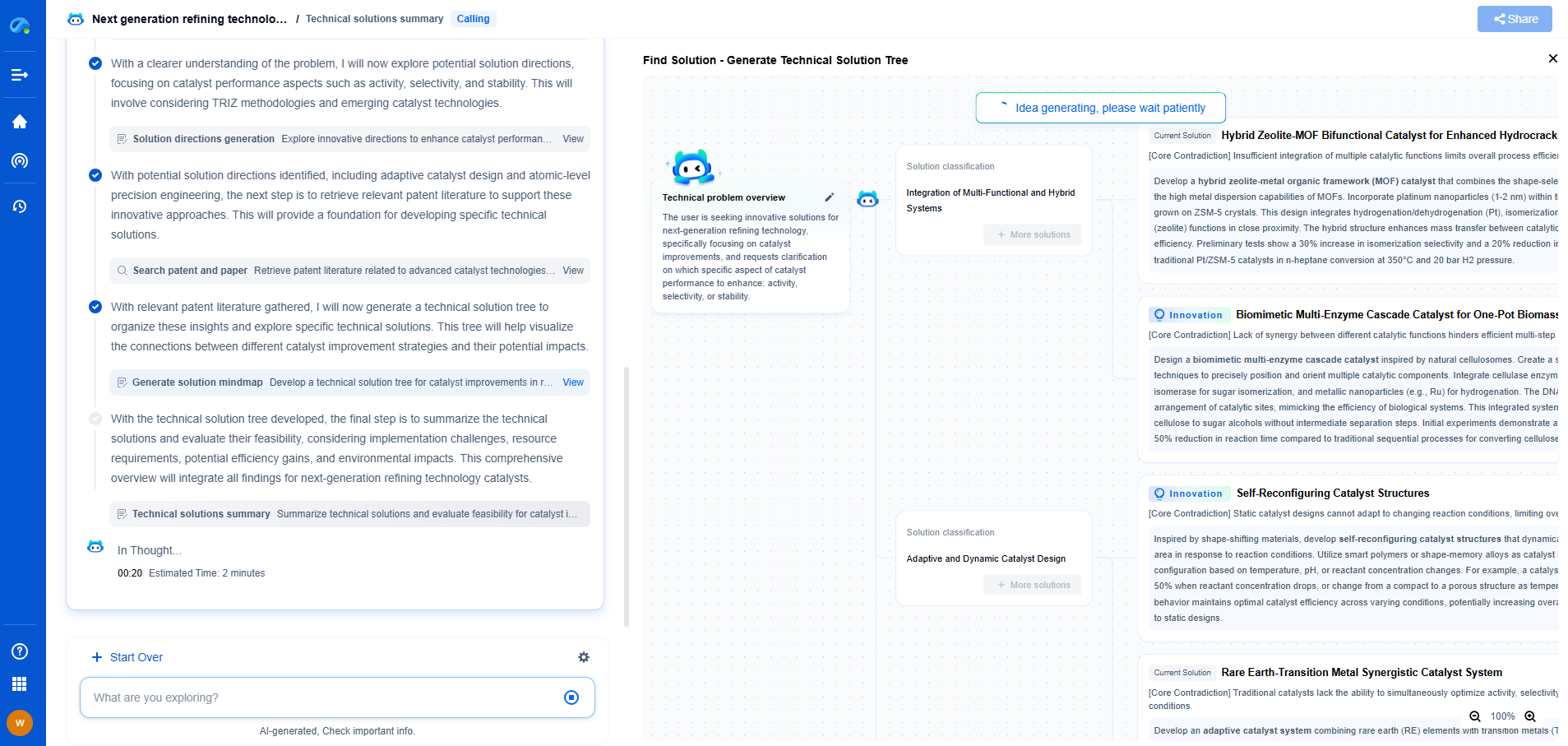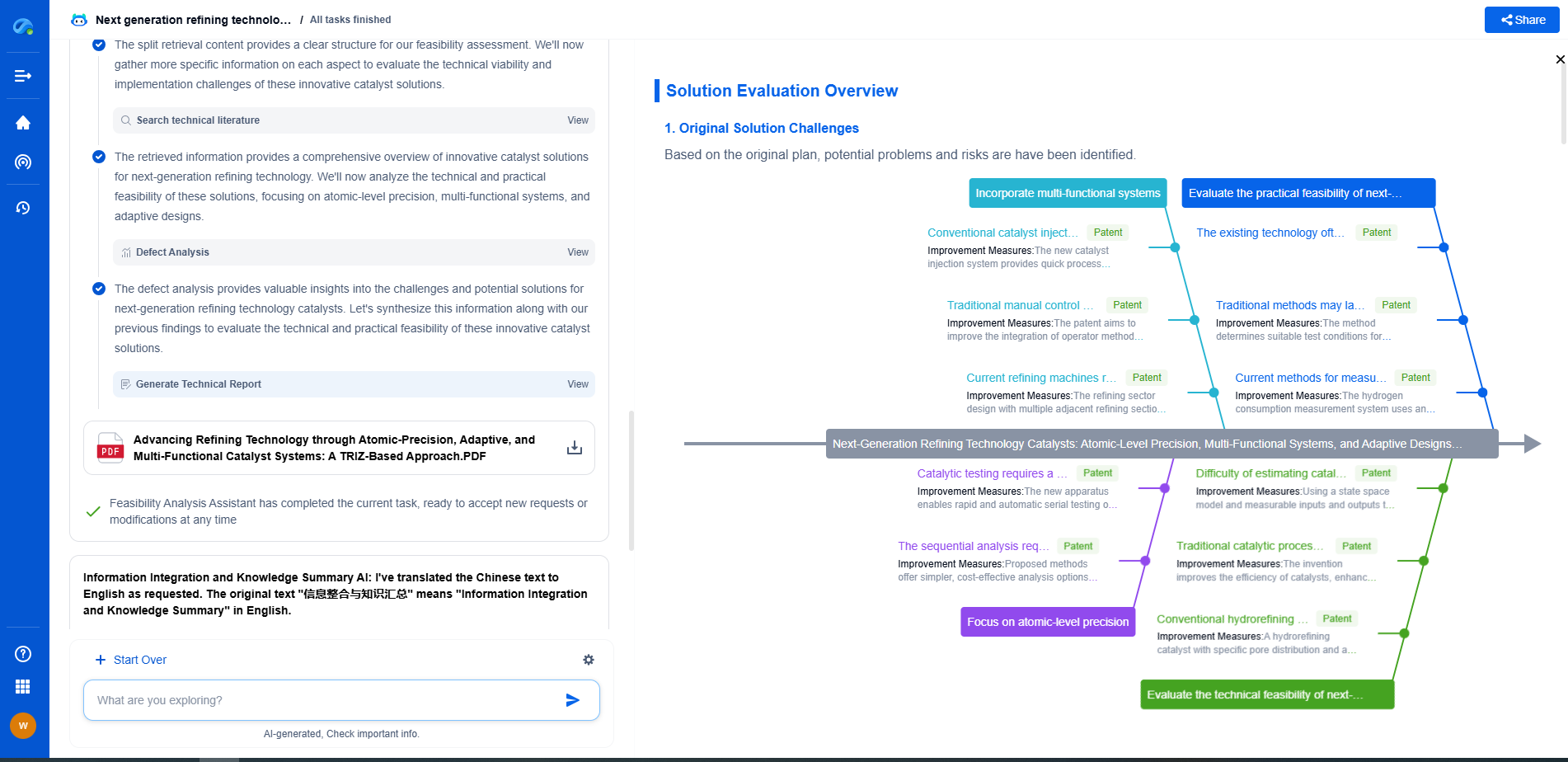SCADA-HMI Data Latency: How to Optimize Polling Rates and Bandwidth
JUL 2, 2025 |
SCADA (Supervisory Control and Data Acquisition) and HMI (Human-Machine Interface) systems are crucial for monitoring and controlling industrial processes. However, data latency in these systems can impede real-time decision-making and reduce efficiency. It is therefore essential to optimize polling rates and bandwidth to reduce SCADA-HMI data latency. In this blog, we’ll explore strategies for achieving optimal performance.
The Role of Polling Rates
Polling rates in SCADA systems determine how frequently data is collected from various sensors and devices. A higher polling rate means data is collected more often, leading to potentially more accurate and timely information. However, increasing the polling rate can also lead to higher data traffic, bandwidth consumption, and processing demands, which might not always be feasible or necessary.
Optimizing Polling Rates
To optimize polling rates, it's essential to balance the need for timely data with system capacity. Start by assessing the criticality of the data. For processes that require real-time monitoring, higher polling rates are justified. However, for less critical data, reducing the polling rate can alleviate pressure on the network and processing systems.
Conduct a detailed analysis of your current polling rates and their impact on system performance. Utilize automated tools to simulate different polling scenarios and identify the optimal rates that align with your operational goals. Implement adaptive polling, which adjusts polling rates based on real-time operational conditions, to achieve further efficiencies.
Managing Bandwidth Utilization
Bandwidth is a key factor in SCADA-HMI systems, affecting how data is transmitted across networks. Overloading the bandwidth can lead to increased latency, packet loss, and delayed data transmission, negatively impacting system performance and reliability.
Strategies for Bandwidth Optimization
One effective strategy is data compression, which reduces the volume of transmitted data without losing essential information. Implementing data prioritization can also ensure that critical data is transmitted first, reducing the impact of latency on high-priority operations. Additionally, consider streamlining data protocols to enhance transmission efficiency.
Network segmentation is another approach to optimizing bandwidth. By dividing the network into smaller, more manageable segments, you can reduce traffic congestion, improve data flow, and enhance overall system performance. Regularly monitor bandwidth usage to identify bottlenecks and adjust network configurations as needed.
Implementing Edge Computing
Edge computing brings data processing closer to the data source, reducing the latency associated with transmitting data to centralized servers for processing. By deploying edge devices, you can process data locally and only send the necessary information to the central system, dramatically reducing the amount of data transmitted over the network and thus mitigating latency issues.
Prioritizing System Security
While optimizing polling rates and bandwidth is crucial, it's equally important to ensure that these optimizations do not compromise system security. Implement robust encryption protocols to protect data integrity and prevent unauthorized access. Regularly update security measures and conduct risk assessments to identify and address potential vulnerabilities.
Continuous Monitoring and Improvement
SCADA-HMI systems are dynamic, with constantly evolving demands and conditions. As such, continuous monitoring and improvement are vital. Implement advanced analytics and monitoring tools to gain insights into system performance and identify areas for optimization. Encourage a culture of continuous improvement, where feedback and data-driven insights guide system enhancements.
Conclusion
Optimizing polling rates and bandwidth in SCADA-HMI systems is vital for reducing data latency and enhancing operational efficiency. By understanding the dynamics of polling rates, managing bandwidth utilization, leveraging edge computing, and prioritizing system security, organizations can significantly improve the performance of their SCADA-HMI systems. Continuous monitoring and a commitment to iterative improvements will ensure sustained benefits and operational excellence.
Ready to Reinvent How You Work on Control Systems?
Designing, analyzing, and optimizing control systems involves complex decision-making, from selecting the right sensor configurations to ensuring robust fault tolerance and interoperability. If you’re spending countless hours digging through documentation, standards, patents, or simulation results — it's time for a smarter way to work.
Patsnap Eureka is your intelligent AI Agent, purpose-built for R&D and IP professionals in high-tech industries. Whether you're developing next-gen motion controllers, debugging signal integrity issues, or navigating complex regulatory and patent landscapes in industrial automation, Eureka helps you cut through technical noise and surface the insights that matter—faster.
👉 Experience Patsnap Eureka today — Power up your Control Systems innovation with AI intelligence built for engineers and IP minds.
- R&D
- Intellectual Property
- Life Sciences
- Materials
- Tech Scout
- Unparalleled Data Quality
- Higher Quality Content
- 60% Fewer Hallucinations
Browse by: Latest US Patents, China's latest patents, Technical Efficacy Thesaurus, Application Domain, Technology Topic, Popular Technical Reports.
© 2025 PatSnap. All rights reserved.Legal|Privacy policy|Modern Slavery Act Transparency Statement|Sitemap|About US| Contact US: help@patsnap.com

